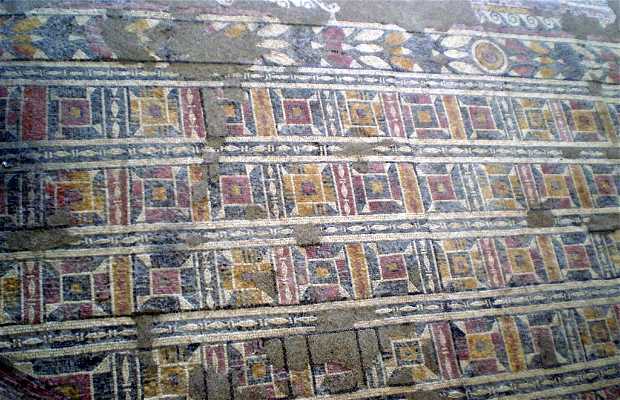Lala
One of the most interesting sections of...
Uno de los apartados más interesantes ...
Uno de los apartados más interesantes del [poi=81431]Museo de las Villas romanas[/poi] que se encuentra en Almenara-Puras (a unos 8 Km de Olmedo), es la sección arqueológica, en la que se han recuperado los restos de una villa romana del siglo IV.
La visita se realiza a través de unas pasarelas metálicas elevadas que puedes ir recorriendo libremente, desde las que se ve perfectamente cómo era la estructura de esta enorme villa rural: Hay dos patios en torno a los cuales de disponen una treintena de estancias, además de las termas.
A lo largo del recorrido va habiendo paneles explicativos, e incluso un [poi=84803]diorama[/poi] a tamaño real sobre el esquema de construcción romano de las villas.
Pero lo más significativo de este complejo arqueológico de 4.800 m2 son los pavimentos de las distintas salas, decoradas con impresionantes mosaicos, destacando especialmente el [poi=84805]Mosaico de Pegaso[/poi].
También se pueden ver restos de pinturas originales todavía adheridas a la pared, de las que anteriormente, en el [poi=84693]centro de interpretación[/poi] había visto la reconstrucción del dibujo completo, y restos de algunos fragmentos de muro originales pintados. Es increíble que después de 16 siglos se conserve todo ésto.
El siguiente punto importante del museo de las villas romanas es la reconstrucción íntegra y a tamaño real de una [poi=84808]Casa Romana[/poi], ¡realmente espectacular!
One of the most interesting sections of the Museum of Roman villas found in Almenara-Puras (about 8 km from Olmedo) is the archaeological section, which have recovered the remains of a Roman villa of the fourth century. The visit is done through a high metal walkways you can go walking freely, from which you can perfectly see how was the structure of this huge country villa: There are two courtyards around which to have thirty rooms, plus the hot springs. Along the route it will having panels, and even a life-size diorama on the schematic construction of Roman villas. But the most significant of this archaeological complex of 4,800 m2 are the floors of various rooms decorated with stunning mosaics, especially highlighting the Mosaic Pegasus. You can also see remnants of original paintings still attached to the wall, which earlier in the interpretive center had seen the reconstruction of the whole picture, and the remains of some fragments of original painted wall. It"s amazing that after 16 centuries is preserved all this. The next important point Museum of Roman villas is the full life-size reconstruction of a Roman house, it really spectacular!



+22

